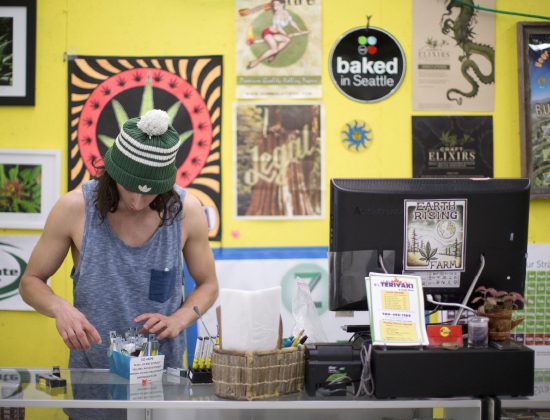In 2012, Washington broke major ground by legalizing recreational marijuana use. A flurry of activity ensued: Washington smokers rejoiced by lighting up on their back porches, entrepreneurs sprang into action, medical patients and retailers wrung their hands, and the Washington State Liquor and Cannabis Board began to formulate complex regulations. Around the country, everyone with a stake in the game sat back to watch it all play out.
Initiative 502 made it legal for adults to purchase up to one ounce of cannabis. But despite this huge gain, it dashed cold water on the hopes of stoner gardeners who had long dreamed of growing their own: In Washington, marijuana is illegal unless purchased from a licensed store. While legal growers could interpret this as a benefit—the illegal status of homegrown eliminates many of the grey areas that encourage black market growers—the restriction was a massive failure of the law’s supposed intent: to stop the persecution of marijuana users.
Meanwhile, I-502 siphoned the lifeblood of the legal industry by imposing a massive tax on recreational marijuana. By imposing a twenty-five percent tax rate on both wholesale and retail sales, the law effectively ensured that legal cannabis couldn’t compete with black market prices. Profit potential was further decreased by statutes that limited the state’s potential for weed tourism: marijuana can’t be consumed onsite at a retail establishment, and pot stores aren’t allowed to sell anything except marijuana products. Seattle would not be the next Vancouver or Amsterdam.
But that wasn’t the only disappointment. The bill seems written to cause friction at every possible juncture. Growers can’t legally be involved in retail businesses, which created two factions lobbying for advantage. Then there’s the issue of medical, which was allowed to co-exist with recreational, but benefited from a more lenient tax structure, providing additional competition to the highly taxed recreational industry.

Frustration came to a head in 2015, when legislators decreed an end to medical-only outlets and required all dispensaries to attain recreational licenses. This could have been a breakthrough, but it was mismanaged to create even more animosity. Medical retailers were blindsided by the miniscule number of new licenses issued (222). The law gave precedent to applicants who could prove previous involvement in the medical business, but some entrepreneurs simply bought paystubs from former medical budtenders and thus jumped to the front of the line, squeezing out longstanding medical operations who were unable to get paperwork and thus went under.
To make matters worse, I-502 gave free reign to the Washington State Liquor and Cannabis Board, which was empowered to create a Byzantine regulatory structure that covers a huge gamut of industry activities including production methods, packaging, hiring processes, hours of operation, labeling requirements, and advertising. It also gave the WSLCB the power to establish classes of marijuana, determine the number of retailers, and regulate the quantity of product a retailer, producer, or processor is allowed to have on premise. (Despite all this regulation, critics allege that the state is not effectively enforcing standards of quality control. Although growers are legally required to disclose the pesticides they use on their plants, the board has been lax about monitoring for pesticide use and inferior product is still making it onto the shelves.)
Washingtonians have been working to fix the flaws in their system. In 2015, Governor Jay Inslee signed a bill that would eliminate the tax on wholesale sales, but increase the tax on retail sales to 37%. This does little to help retailers who compete with the black market, but it alleviated stress on legal growers. Perhaps to even things out, the WSLCB then announced a policy that may be more onerous to growers than retailers: the board is investing one million dollars in new testing equipment and is hiring two fulltime workers to conduct tests on pesticide levels.
Activists and legislators are also taking action on the grow-your-own issue. HB 1092, which is currently under review, would allow a person to grow six plants and possess up to 24 ounces of cannabis. It would also allow a household to grow up to twelve plants and possess up to 48 ounces. (This is significantly more generous than Oregon’s grow- your-own law.) Other bills currently in the works propose to legalize delivery services and nonprofit transfers of marijuana. Meanwhile, the Washington State Department of Agriculture is implementing a new certification program to label pesticide- free weed.
These reforms are heartening and are a real testament to the bottom line: despite all the aforementioned flaws, Washington is a progressive state that should still have bragging rights for leading the pack. In most of the world, legal recreational weed is still just a pipe dream.

